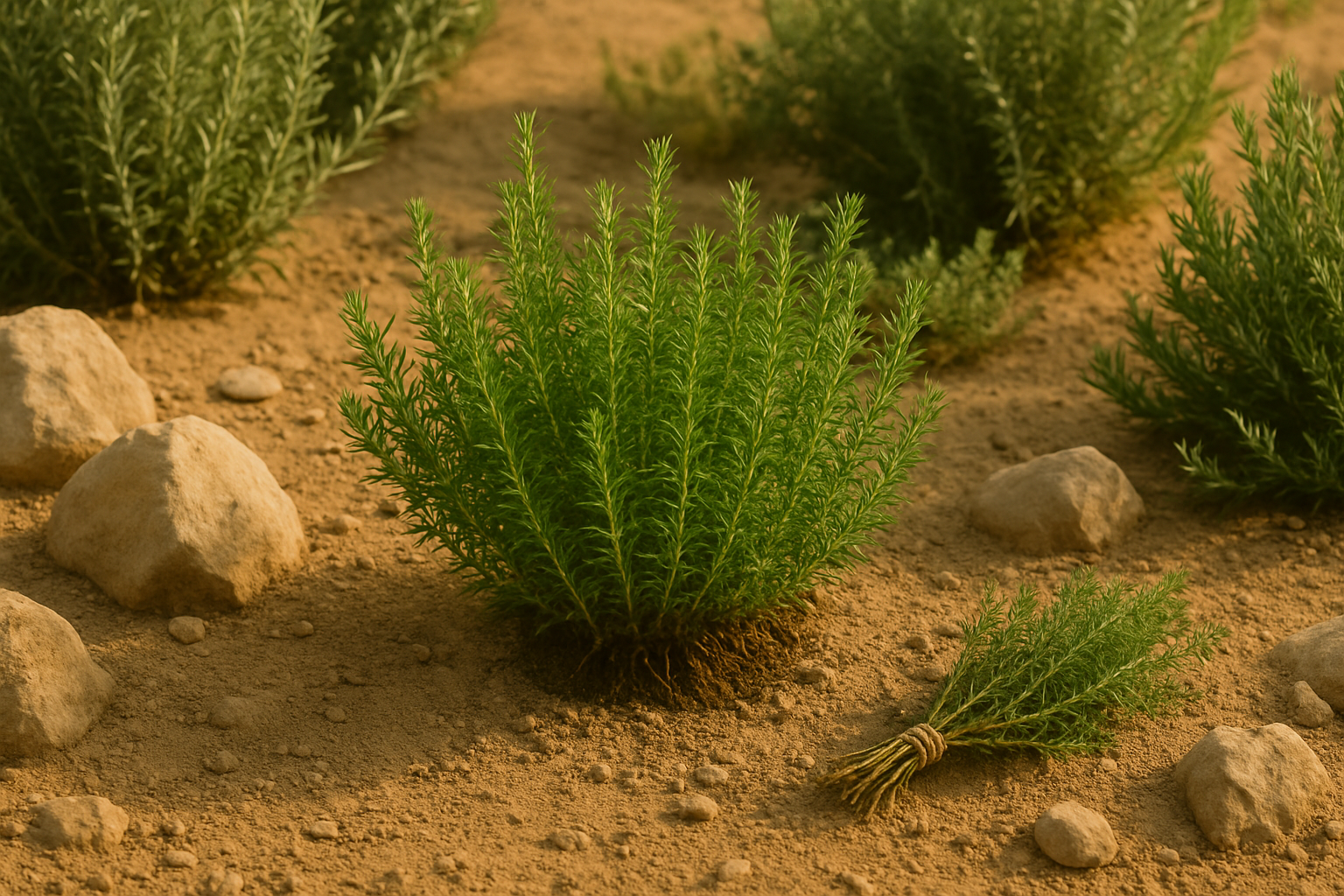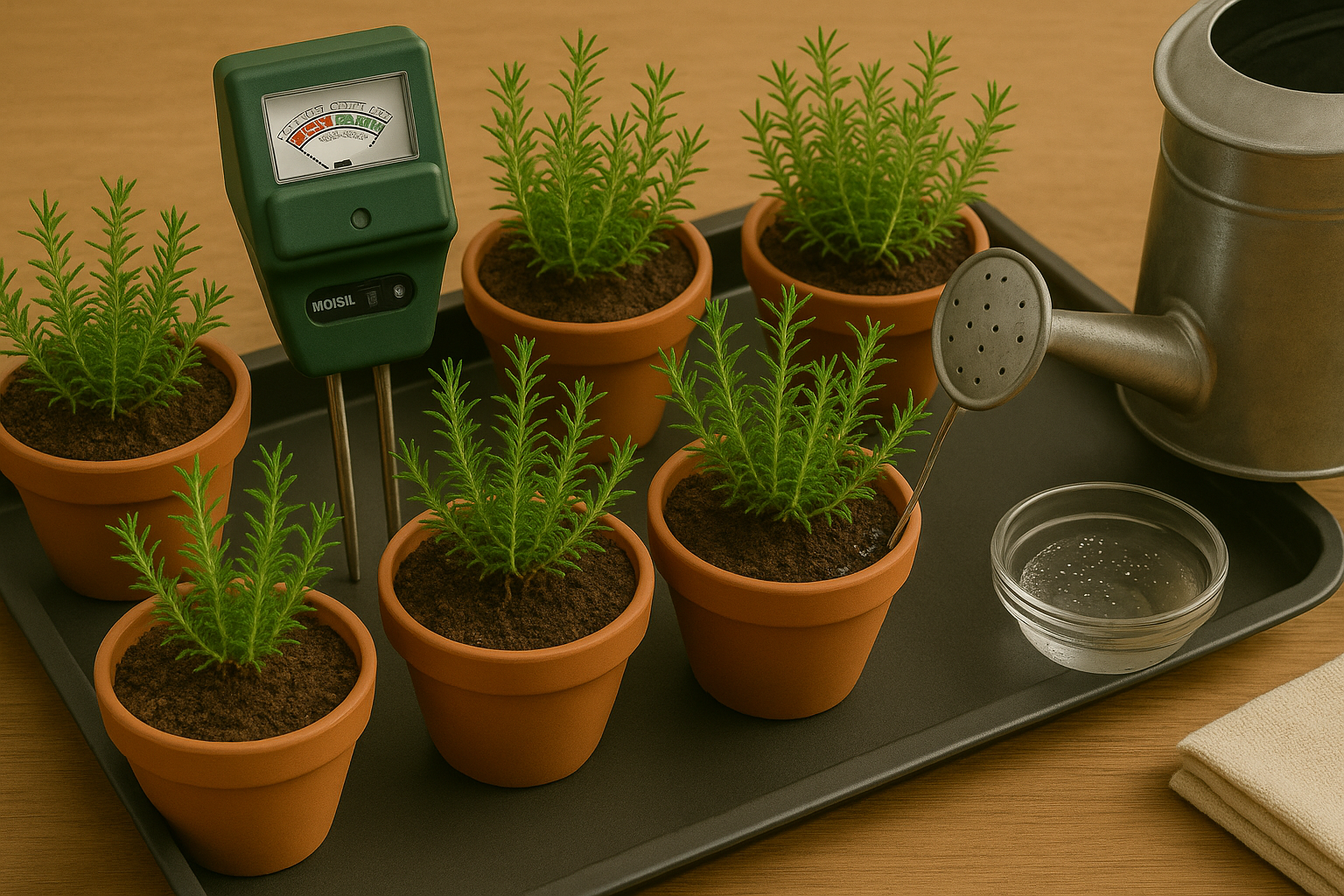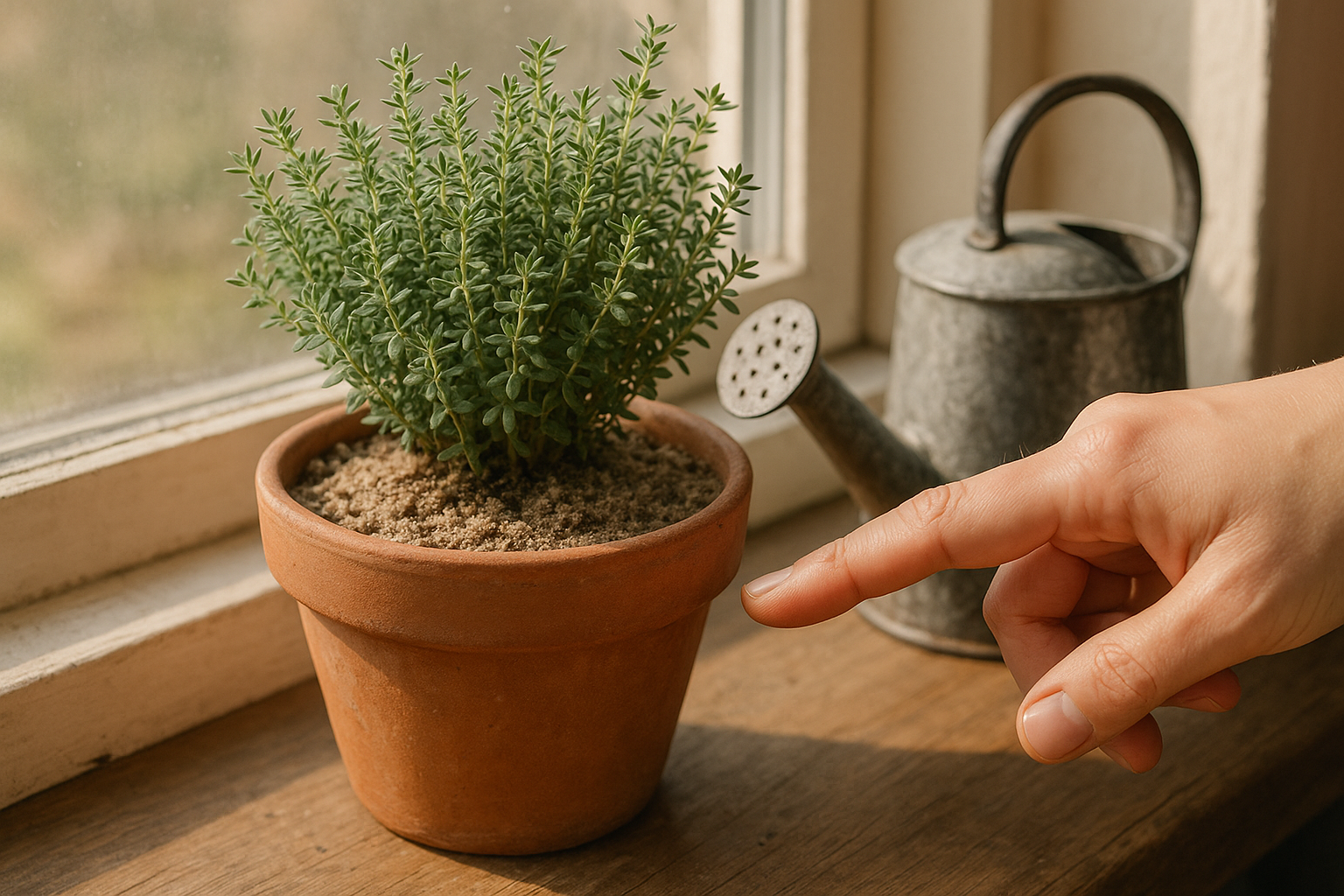Introduction to Thyme Care
Watering thyme might seem simple, but finding the right balance is essential for growing a thriving, aromatic plant—whether you’re using thyme in your kitchen or admiring its beauty in the garden. Thyme is cherished by home cooks and gardeners alike for its robust flavor and delicate, evergreen appearance, but its Mediterranean roots mean it has different needs than thirstier herbs.
Proper thyme care starts with understanding how moisture affects this drought-tolerant plant, as both overwatering and underwatering can quickly cause issues like root rot or wilting. How often you water thyme depends on several factors: is your thyme growing outdoors in the garden or inside a pot on your windowsill? Is your climate dry and sunny, or rainy and humid?
Mature, well-rooted plants can handle prolonged dry periods, while young transplants need a gentler hand. In this beginner-friendly guide, you’ll discover the best practices for watering thyme in any growing environment, learn how to spot signs of water stress, and pick up practical tips for keeping your thyme healthy and full of flavor all season long.
Understanding Thyme’s Watering Needs

Thyme thrives in the rocky, sun-drenched hills of the Mediterranean, and its watering needs reflect these origins. Unlike many lush-leaved herbs like basil or mint, thyme is naturally drought-tolerant and adapted to dry, well-drained soils. This means thyme prefers to stay on the dry side, and consistently moist soil can actually do more harm than good.
Too much water suffocates thyme’s roots, making them vulnerable to root rot—a common problem indicated by yellowing leaves and wilting stems, even when the soil feels wet. Fungal issues also develop in persistently wet conditions, stunting the plant’s growth.
When watering thyme, think “less is more.” During the active growing season in spring and summer, water only when the top inch of soil feels bone dry. For container-grown thyme, this might mean watering once every seven to ten days, depending on your climate. In autumn and especially winter, cut back even more, as thyme goes dormant and needs very little moisture.
Always allow excess water to drain away by using pots with drainage holes or planting in sandy, loose garden soil. If you’re unsure, err on the dry side—thyme will forgive a little drought but rarely recovers from soggy roots.
For a healthy, fragrant thyme patch, remember that mimicking its sun-baked, well-drained Mediterranean home is the key to watering success.
Factors That Affect Thyme Watering Frequency
Watering thyme isn’t a one-size-fits-all task—it depends on several factors that influence how quickly the soil dries out and how much moisture the plant really needs.
Climate and weather play a huge role: in hot and dry conditions, thyme’s soil loses moisture much faster, meaning you’ll often need to water every few days. In contrast, if you live somewhere humid or get frequent rain, watering might only be necessary every week or two, since the air and soil hold onto moisture longer.
Pots versus in-ground plantings also matter a lot. Thyme grown in containers tends to dry out more quickly than garden beds because pots can’t store as much water and heat up faster, so check the soil daily, especially in summer. Meanwhile, thyme growing directly in well-drained garden soil can usually go longer between waterings; just make sure the ground doesn’t become soggy, as thyme hates wet feet.
Plant maturity is another key factor: young, newly planted thyme needs more frequent watering until its roots are established, while mature, bushy thyme is drought-tolerant and does better with less frequent, deep soakings.
Soil type rounds out the list—sandy soils drain and dry out fast, so thyme planted there will need water more often. In contrast, richer, loamy soils retain moisture longer and may hold onto enough water through light rain or dew.
A good rule of thumb is to check soil moisture by sticking your finger about an inch deep; if it feels dry, it’s time to water.
Ultimately, understanding these factors helps you avoid both underwatering and overwatering, keeping your thyme healthy and productive, whether it’s thriving in a sun-baked patio pot or a lush garden bed.
How to Water Thyme Properly

Watering thyme correctly keeps it healthy and flavorful, whether you’re growing it in the ground or in containers. Start by ensuring thyme is planted in well-draining soil—soggy roots are one of its worst enemies.
In garden beds, aim to water deeply but infrequently. Once every 7 to 10 days is usually enough, depending on rain and heat. For container thyme, the soil dries faster, so check it every 3-5 days.
The best time to water is early morning, so the leaves dry quickly and fungal issues are minimized. Always check the soil before reaching for the watering can: stick your finger about an inch deep into the soil. If it feels dry, it’s time to water.
For more accuracy, a soil moisture probe can help gauge moisture deeper in the soil, ensuring the roots get what they need without overwatering.
Use a small watering can with a narrow spout or a gentle hose nozzle to avoid disturbing delicate stems and to target water at the base of your thyme. Drip irrigation or a self-watering pot can help provide consistent moisture, reducing guesswork and preventing overwatering.
Remember, thyme is drought-tolerant and prefers a bit of neglect—let the soil dry out slightly between waterings for the best results. Pay close attention during hot weather or heatwaves, as your thyme may need more frequent checks.
Consistent, mindful watering will keep your thyme thriving with minimal fuss.
Signs of Overwatering and Underwatering Thyme
Knowing the difference between overwatering and underwatering is key to keeping your thyme vibrant. Overwatered thyme often shows yellow, droopy leaves, soft or mushy stems, and may develop a musty smell if root rot sets in. You might also spot dark spots at the base of the plant or notice that the soil never seems to dry out.
Underwatering, on the other hand, reveals itself with brown, crispy leaves, wilting stems, and overall slowed growth—your thyme may even look limp or shriveled, especially during hot weather.
If you notice any of these issues, don’t panic. For overwatering, check your pot’s drainage holes and remove any standing water from saucers, then let the soil dry thoroughly before your next watering. If possible, repot thyme into fresh, well-draining soil and trim away any rotten roots.
If the plant is underwatered, give it a deep drink and keep an eye on it—healthy thyme should perk back up within a few hours.
Whichever issue you face, take note of environmental factors like sunlight and container size, as these can affect how often your thyme needs water.
The best tip is to regularly check the soil with your finger—if the top inch feels dry, it’s time to water. Adjust your routine as the seasons change, and remember, regular observation is your best tool for catching and fixing problems early. By tuning into your thyme’s needs, you can help it thrive year-round.
Seasonal and Environmental Adjustments
Adjusting your watering routine as the seasons change is crucial for your plants’ health. In the heat of summer, most plants need more frequent watering since high temperatures and intense sunlight can dry out soil quickly. Watering early in the morning allows roots to soak up moisture before it evaporates.
In contrast, during winter, many plants enter a rest period and grow more slowly, so you can usually water less often, ensuring the soil partially dries out between watering sessions.
If you’re facing a heatwave, mist the leaves of humidity-loving plants and use mulch outdoors to lock in moisture. During periods of heavy rainfall, hold back on extra watering and make sure pots have good drainage to prevent root rot.
Indoor plants, especially in air-conditioned or heated rooms, can dry out unpredictably. Check the soil with your finger a couple of inches down to see if it’s time to water, rather than sticking to a rigid schedule.
After repotting, give your plant a thorough initial watering to help it settle, but then let the soil become nearly dry before watering again, since roots may be more prone to rot while adjusting. Similarly, after pruning, hold off on heavy watering for a week to allow cuts to heal and reduce stress.
Quick FAQ
Many gardeners believe that all herbs, including thyme, need consistently damp soil to thrive, but this is actually a myth—thyme prefers its soil to dry out between waterings. Overwatering can lead to root rot and stunted growth, so one of the best professional tips is to let the soil dry at least an inch down before adding more water.
Another useful tip is to plant thyme in well-draining soil and containers with good drainage holes, which helps prevent soggy roots. Lastly, water early in the morning to allow moisture to reach the roots and evaporate from the foliage, reducing the risk of disease.
Remember, thyme evolved in Mediterranean regions with rocky, arid soil and little rainfall, so less is often more when it comes to watering. Apply these practices, and you’ll be well on your way to a healthy, aromatic thyme plant that flourishes in your garden or kitchen.
